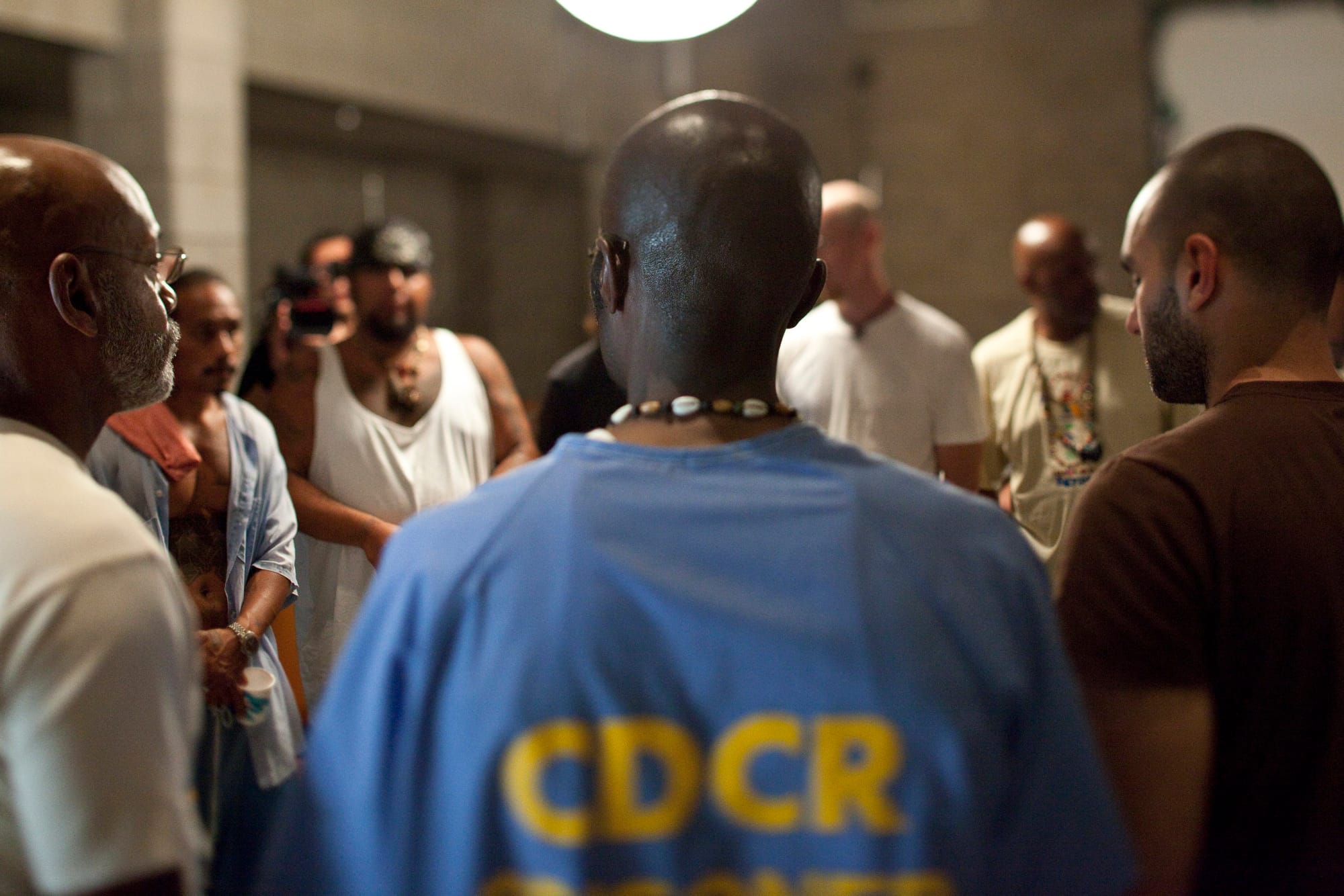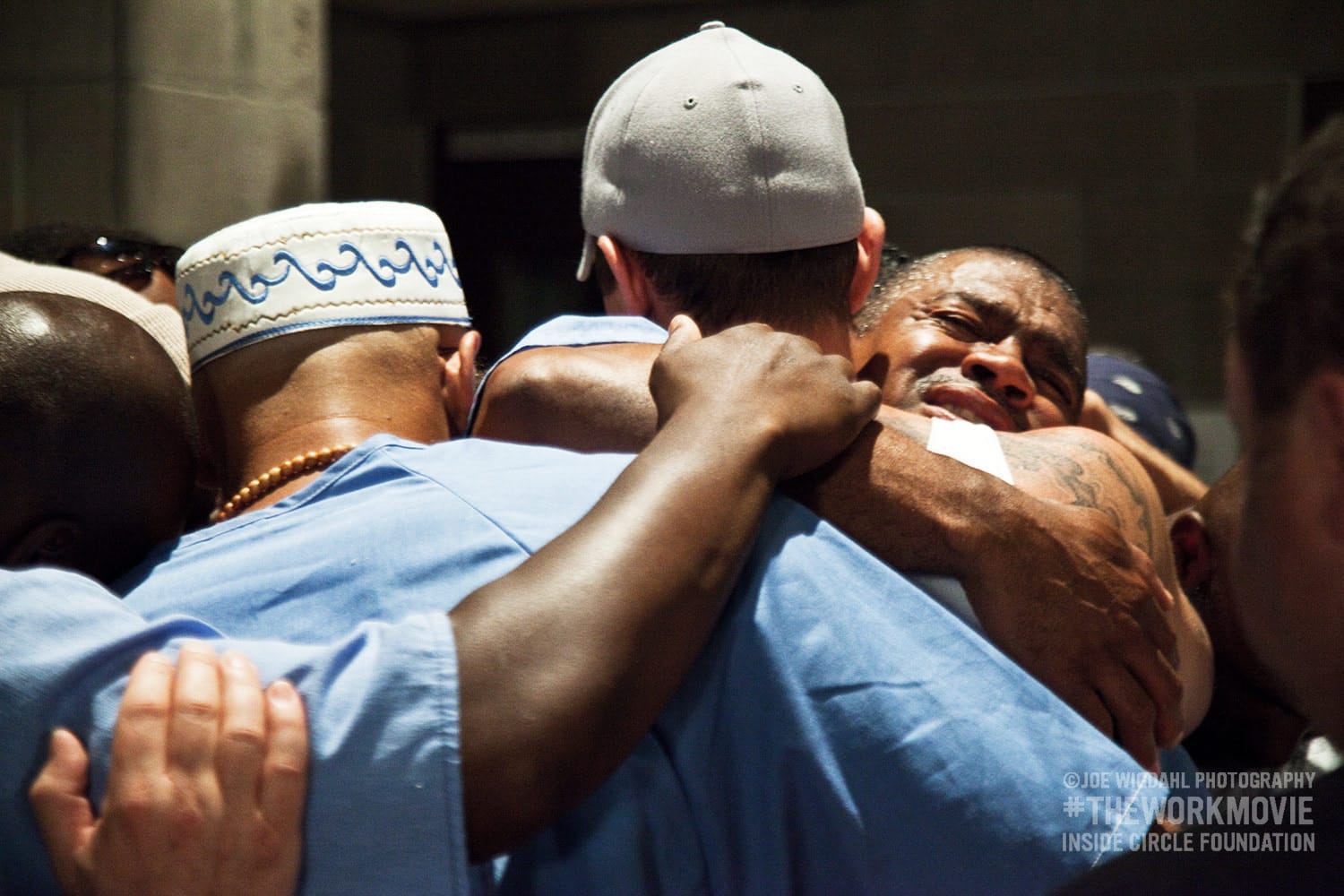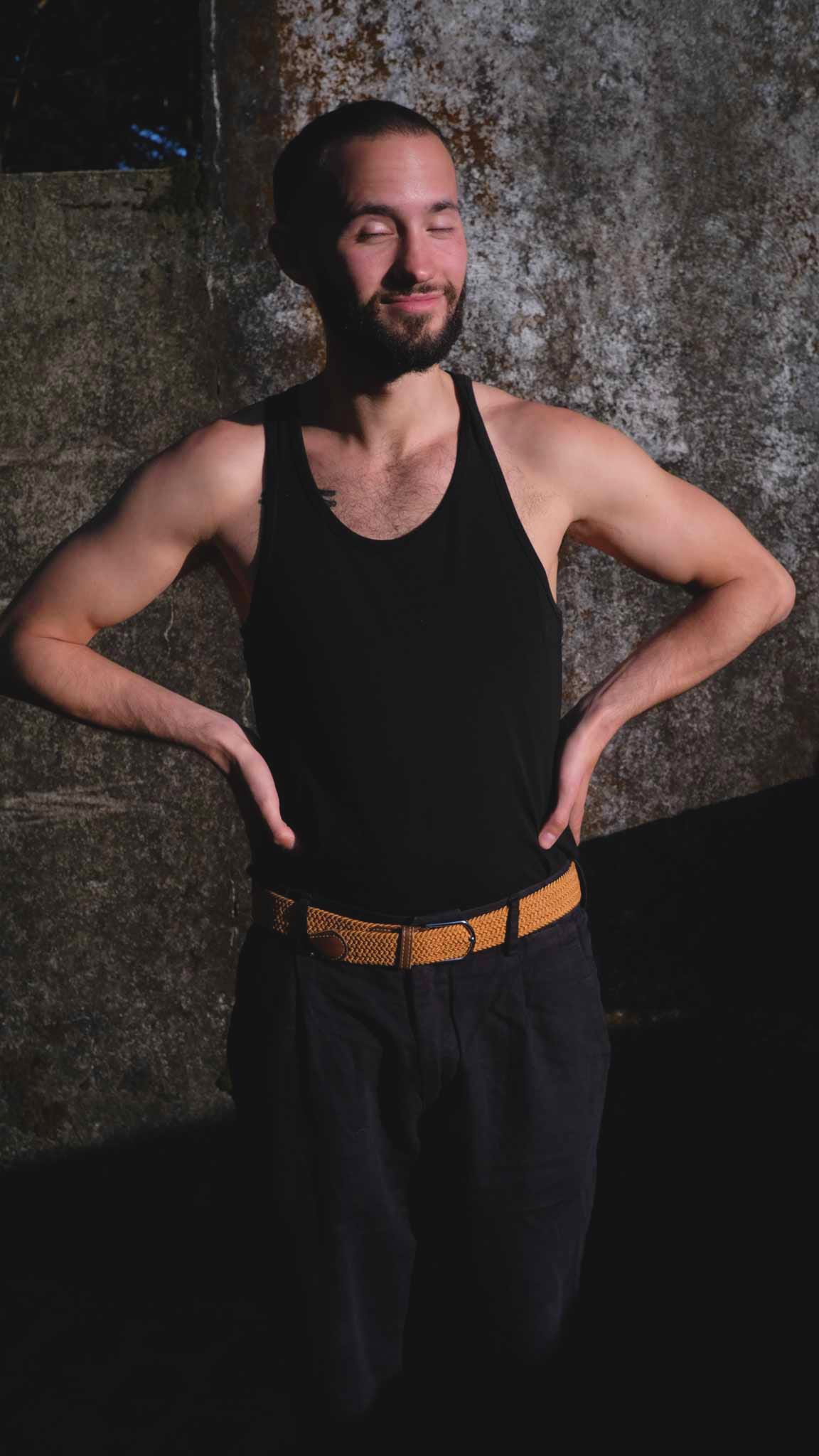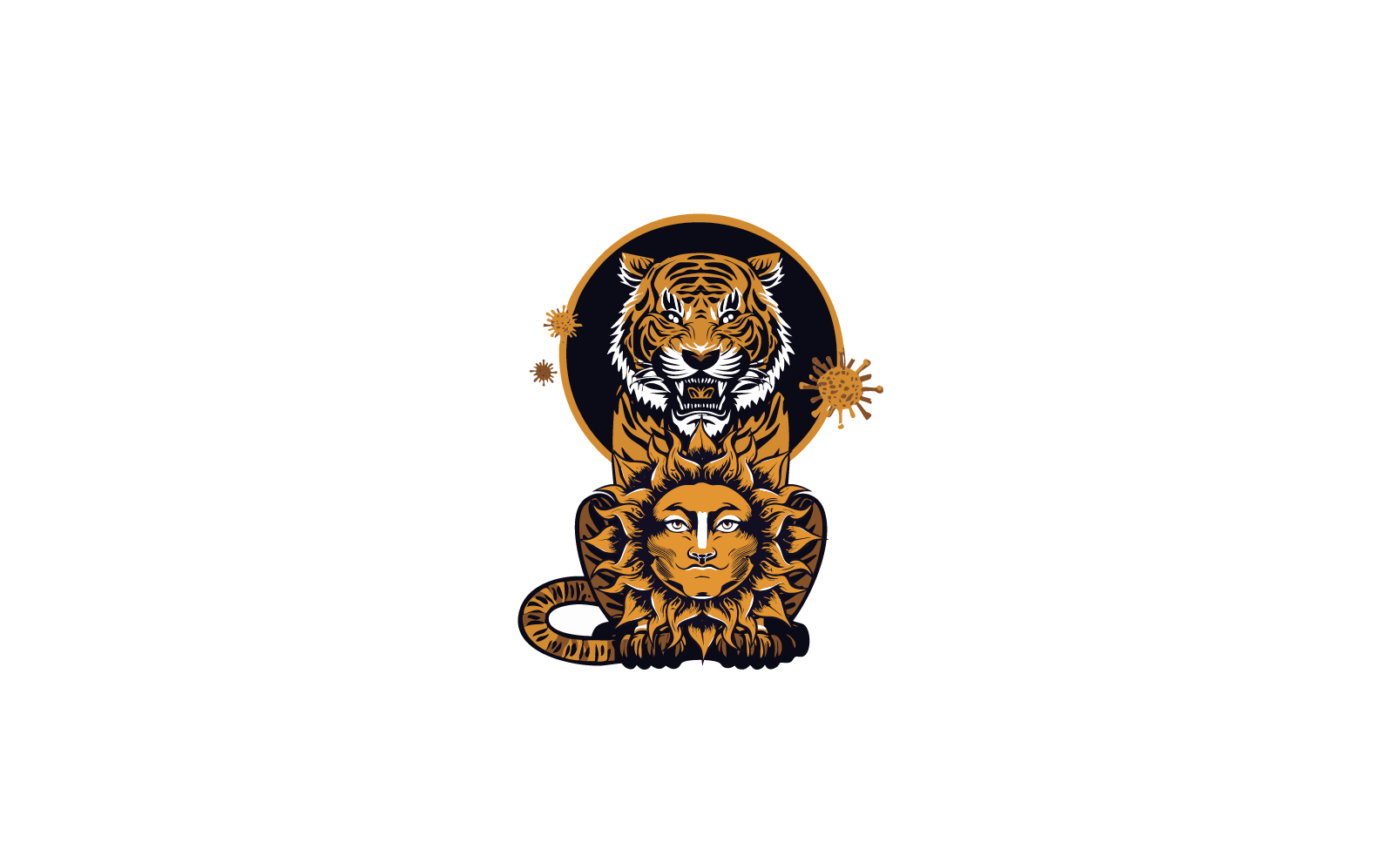"The Work" of Healing Masculinity
Vulnerability can lead to a more authentic, connected & resilient form of strength. What unfolds in this documentary is masculinity, stripped bare. Men—many of them hardened by years of violence, isolation, and survival—face something far more terrifying than any fight: their own pain.

“A process so ego-stripping that it feels unseemly to witness,
The Work is enlightening yet also punishing.”
— New York Times
“The most powerful group therapy session ever caught on camera.”
— IndieWire
"Masculinity"
The word often conjures images of stoicism.
You know, the strong and silent type of men.
Boys hear it constantly: "Man up." "Don't cry."
Emotions? We learn to bury them deep.
Our society molds men into emotionless statues. Our value is measured by competence. We are obsessed with “dominance hierarchies”, self induced suffering— all supported by a system that has been created by our own hands. But from a mind different than ours.
This is wrong. And we all know it deep in our hearts. True strength lies not in the absence of feeling. A documentary, called "The Work," dares to ask this. This is one of my favourite documentaries I have watched so far! In my 28 years on planet earth.
It explores an intense therapy retreat.
The setting: Folsom Prison.
The participants: inmates and outsiders.
What unfolds is a challenge to everything we think we know about men.
It's about raw emotion.
Inside the Prison Doors

Inside, a different kind of confinement begins. "The Work" takes us there. Folsom State Prison; the name itself carries weight because it's not just any prison. Opened in 1880, it's California's second-oldest, a fortress built from granite quarried by the inmates themselves.
For decades, it held some of the most violent offenders, earning a reputation as the "end of the line." It was one of the first maximum-security prisons in the United States. Imagine cold, stone cells & life long sentences. Think a place where hope goes to die.
While it now houses primarily medium-security inmates, the echoes of its past remain. The granite walls still stand, a stark reminder of the harsh reality within. This is the place where the documentary "The Work" unfolds.
Not the best tourist destination.
This is where men live, locked away.
But something special happens here.
Would you think about social rehab, group therapy? In such a place?
“Strength” in Men

"The Work" directly confronts ingrained emotional stoicism. This film makes you see men—who have spent their lives proving their strength through dominance—break down in ways that feel almost sacred.
They scream. They sob. They grieve years of repressed trauma. And in doing so, they reclaim something deeper than toughness: their humanity.
Stripped bare of societal expectations and the familiar roles they play, these men, both inmates and outsiders, begin to grapple with long-buried traumas and vulnerabilities. The therapy sessions are raw and visceral; they push participants to confront uncomfortable truths about themselves and their relationships.
In this unexpected space, we witness hardened criminals, men who have navigated a world of violence and learned to project an image of invincibility, shedding layers of defense to reveal the scared, hurt boys beneath. Their voices crack, tears stream down faces that likely haven't cried in decades.
But in those moments of brokenness, something extraordinary happens—they connect.

They see their shared humanity reflected in the eyes of men they might otherwise have dismissed or feared. This display of vulnerability is not a descent into helplessness; it is an act of courage, a reclamation of a part of themselves that has been suppressed for too long. It is a testament to the fact that even in the most unlikely of places, empathy and understanding can take root. These internal qualities offer a glimpse of redemption and the possibility of healing. The intensity of these encounters is there. It feels visceral. The emotional stakes incredibly high, yet within this pressure cooker environment, barriers fall down, and the potential for genuine transformation emerges.
This is why "The Work" is so vital. It dares to show us that the capacity for emotional honesty and connection exists within all men, even those who have committed terrible acts. It challenges us to reconsider our preconceived notions of masculinity and to recognize the strength it takes to be truly vulnerable.
Kiki’s Opening
A man named Kiki, serving 17 years for a murder/robbery conviction, enters the therapy circle.
The camera focuses on him. He sits in the circle, a palpable tension radiating from him. He says his name, "Keeks," and states his intention. He wants to touch certain parts of his life. He speaks of fear. The fear of loss. His family. Not knowing how they are. What they are going through. He wants to get into it. He needs the help of the men in the group. He needs them to guide him to a place he has been denying.
He hasn't grieved for his sister. It has been a long time. He doesn't know how. He is tired of holding it in. Tired of the fear. The concern that when he starts to feel, he will have to pull back. He wants to be open. He wants to let the floodgates open.
He admits, the fear is there.
Another man in the circle gently asks, "What's the fear about?"
Kiki struggles to articulate it. He fears losing something he has had for so long. The protective shield. The armor he wears. He describes this armor. "It's not okay to cry. It's not okay to mourn. It's not okay to show that you have tears."
But he wants to feel. He wants to feel what it is like to mourn. He doesn't want to bottle up the little boy inside. The little boy who cried when his father beat him. He doesn't want to deny that child what he has always wanted. He doesn't want to take away what his father took away. He doesn't want to feel that pain anymore. The vague, undefined pain of being unable to feel.
He wants to be able to cry because his sister died. He wants to be able to feel because he cannot hug his mother. That is what he wants to feel. Not like some unfeeling thing. Not like a sucker with no emotions. He wants to feel like himself. He doesn't want to be afraid of that. He doesn't want to have to pull back.
Another man offers reassurance. "You trust me?"
"I trust you."
"Well, let's step into that here. Open up to that feeling."
"Trust me. Take me there with you. I'll go there with you. I won't let anything happen. I got you. Ain't no fight."
The men guide him. "Stick with it. I'm right here. I'm not going anywhere. Say the feeling. Open up. Let your hands go. Open up. Don't put that armor back up. Don't put that shield back up. She's gone. And what do you feel about that?"
"I'm sad."
"I feel like sadness."
"Don't stuff it. Don't run from the feeling."
Kiki begins to sob. The sound is wrenching, primal. The men around him offer support, their presence a silent anchor in his storm. "Yeah. Relax your jaw. Let it go. Let it go. Open. Breathe."
The raw emotion pours out of him. Tears stream down his face. His body shakes with the force of his grief. The men continue to offer words of comfort. "Yeah. Yeah. Breathe. So there it is. Just breathe."
The intensity of the moment fills the room. The camera lingers on Kiki's face, a mask of pain and release. The sound of his sobbing echoes in the silence. This is the work. The difficult, necessary work of breaking down walls and allowing feelings to surface. It is a messy, uncomfortable process, but in its rawness, there is a profound beauty.
The beauty of a man finally allowing himself to feel.
The Difference between Resilience and Strength
At the core of the message of this documentary lies the realisation of something important. We need to realise that there is a difference between simple "strength" and what we call "resilience". We men don't want to be strong. In truth, we want to be resilient. And being resilient is a whole different ballpark. Reslience encompasses strength, but is so much more too.
We often use the words "strength" and "resilience" interchangeably, but they represent distinct qualities, especially when considering the journey of men like those in "The Work."
Strength, in its traditional sense, often implies an unyielding force, the capacity to withstand pressure without breaking. It's the armor Kiki described, the stoic facade many men feel compelled to maintain. This kind of strength can be valuable—allowing individuals to endure hardship and persevere through difficult times.
However, it can also be fragile at the same time. When pushed beyond its limits, it can shatter, leaving the individuals broken and lost.
Resilience, on the other hand, is not about resisting pressure but about adapting to it. It's the ability to bounce back from adversity, to recover from setbacks, and to learn and grow from challenging experiences. Resilience is the flexibility of a tree trunk in the wind, bending but not breaking. It acknowledges that pain and hardship are inevitable parts of life but emphasizes the capacity to navigate those storms and emerge, perhaps scarred; but ultimately stronger.
The men in "The Work" demonstrate the shift from a reliance on traditional strength to the cultivation of resilience. Kiki's armor, his strength, was the stoic silence he maintained about his grief. It was a way to withstand the pain, to prevent it from overwhelming him. To prevent damage on his surroundings. But this strength was ultimately isolating and unsustainable. It kept him locked away, unable to process his emotions or connect with others.
Through the therapy process, Kiki began to tap into his resilience. He allowed himself to be vulnerable, to feel the sadness and grief he had been suppressing for so long.
This wasn't an act of weakness; it was an act of courage, a demonstration of his capacity to adapt and heal. Ultimately, while strength can help us weather some storms, it is resilience that allows us to navigate the inevitable tempests of life without being destroyed.
The men in "The Work" offer a powerful example of how embracing vulnerability and developing resilience can lead to a more authentic, connected, and ultimately more sustainable form of strength.
The Work—A Mirror for Masculine Healing

In my opinion, The Work is one of the greatest documentaries ever made. It’s raw. It’s uncomfortable. And it reveals something that most men will never admit out loud: we are conditioned to suppress our emotions—not just by ourselves, but by society at large.
What unfolds in this documentary is masculinity, stripped bare. Men—many of them hardened by years of violence, isolation, and survival—face something far more terrifying than any fight: their own pain.
Watching it, I was reminded of something I wrote in How to Quit Porn Addiction:
“You don’t have to be the ‘hard’ guy all the time. You don’t have to dominate. You don’t have to carry everything alone. Being in touch with your emotions, showing compassion, asking for help—these are not signs of weakness but of balance and wisdom.”
See you next week!
Kiss kiss,
Tarkan





